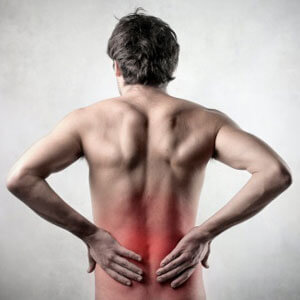Stenosis Treatment in Lincoln
Spinal stenosis can significantly impact a person’s quality of life, creating pain and mobility limitations that affect daily activities
Lincoln Chiropractor Dr. Spencer Brown
This condition occurs when the spinal canal narrows, putting pressure on the spinal cord and surrounding nerves.
The narrowing can happen in different areas of the spine, with the lower back and neck being the most commonly affected regions. Many practice members are surprised to learn that their chronic pain and discomfort stem from this structural issue. Fortunately, targeted chiropractic care can provide substantial relief and improved function for those suffering from stenosis.
Understanding the Root Causes
Spinal stenosis typically develops over time due to age-related changes in the spine. Osteoarthritis plays a major role, as cartilage breakdown leads to bone spur formation. These bony growths can extend into the spinal canal, reducing available space for nerves.
Thickened ligaments also contribute to the problem. Years of wear and tear cause these supportive structures to become rigid and bulky, further encroaching on nerve pathways. Herniated discs add another layer of complexity, as displaced disc material can compress already crowded neural structures.
Some individuals face additional challenges due to congenital factors. A naturally narrow spinal canal makes them more susceptible to stenosis symptoms, even with minor degenerative changes. Trauma from accidents or falls can accelerate the narrowing process through fractures or inflammatory responses.
Recognizing the Warning Signs
Lower back stenosis presents with distinctive patterns. Walking becomes increasingly difficult, especially on flat surfaces or downhill slopes. Many people notice they can walk farther when leaning forward, such as when pushing a shopping cart. This forward posture opens up the spinal canal slightly, providing temporary relief.
Leg symptoms often dominate the clinical picture. Cramping, heaviness, and numbness in the buttocks and thighs develop during activity. These sensations typically improve with rest or sitting down. Some practice members describe feeling like their legs are “giving out” during longer walks.
Cervical stenosis affecting the neck creates different challenges. Hand clumsiness becomes noticeable—buttoning shirts or writing becomes difficult. Balance problems may develop, along with weakness in the arms and legs. In severe cases, bowel and bladder function can be affected, requiring immediate medical attention.
Effective Treatment Approaches
Chiropractic care offers a conservative approach to stenosis management. Specific adjustments can help restore proper spinal alignment and reduce nerve pressure. Gentle mobilization techniques improve joint function without aggravating inflamed tissues.
Our practice combines spinal adjustments with targeted therapeutic exercises. Strengthening the core muscles provides better spinal support, while flexibility work maintains joint mobility. Postural correction addresses underlying biomechanical issues that contribute to stenosis progression.
Lifestyle modifications play a crucial role in symptom management:
- Weight management reduces spinal loading
- Ergonomic improvements at work and home
- Activity modification to avoid aggravating positions
- Heat and cold therapy for pain relief
Take Control of Your Stenosis
Living with spinal stenosis doesn’t mean accepting a life of limitations. Contact Adjusted Life Chiropractic today to discover how our comprehensive approach can help you regain comfort and mobility.


